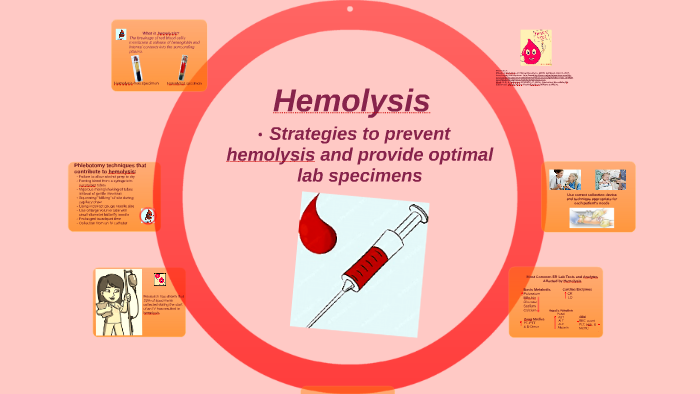Hemolysis by stephanie skurtu
Table of Contents
Table of Contents
If you’ve ever had blood drawn, you know that the experience can be uncomfortable. But did you know that there’s more to it than just a little pinch? Drawing blood can also lead to hemolysis, or the rupturing of red blood cells. Not only can this affect test results, but it can also be dangerous for the patient. So, how can you prevent hemolysis when drawing blood?
When drawing blood, it’s important to be gentle and precise with the needle. Any unnecessary movement or shaking can cause hemolysis. Additionally, using the wrong size needle or not allowing the alcohol to dry before inserting the needle can also cause hemolysis. All of these issues can lead to inaccurate test results and more discomfort for the patient.
The first step in preventing hemolysis when drawing blood is to use the proper technique. This means being gentle and precise with the needle, using a properly-sized needle, and allowing the alcohol to dry before inserting the needle. It’s also important to avoid rough handling of the blood tube after it has been collected. Instead of shaking the tube, gently invert it a few times to mix the blood with any additives.
In summary, preventing hemolysis when drawing blood is crucial for maintaining accurate test results and ensuring patient safety. By using the proper technique and avoiding unnecessary movement, you can help prevent hemolysis and make the blood draw experience more comfortable for the patient.
Proper Needle Technique
As a medical assistant, I’ve had plenty of experience with drawing blood. One thing I’ve learned is that using the proper needle technique is crucial for preventing hemolysis. First, it’s important to select the right needle size for the patient. A needle that is too small can cause hemolysis due to increased suction, while a needle that is too large can damage the vein and cause hemolysis from excessive pressure. Additionally, it’s important to be gentle when inserting the needle and to avoid unnecessary movement, such as shifting the needle back and forth or twisting it. By using proper technique, I’ve been able to minimize the risk of hemolysis and ensure accurate test results.
Prevention During Blood Collection
Another way to prevent hemolysis during blood collection is to avoid rough handling of the blood tube after it has been collected. Instead of shaking the tube, which can cause hemolysis, gently invert it a few times to mix the blood with any additives. Additionally, it’s important to properly train staff on proper blood collection techniques to ensure consistency and minimize the risk of hemolysis.
The Importance of Using the Right Needle Size
Using the right needle size is crucial for preventing hemolysis when drawing blood. A needle that is too small can cause hemolysis due to increased suction, while a needle that is too large can damage the vein and cause hemolysis from excessive pressure. It’s important to select the right needle size for the patient based on their age, weight, and other factors. Additionally, the angle of insertion can affect the risk of hemolysis. For example, inserting the needle at a 15-degree angle may be less likely to cause hemolysis than inserting it at a 30-degree angle. By using the right needle size and angle, you can help prevent hemolysis and make the blood draw experience more comfortable for the patient.
The Role of Training and Education
Proper training and education can play a critical role in preventing hemolysis when drawing blood. By providing staff with regular training and ensuring that they are up-to-date on the latest techniques and best practices, you can help minimize the risk of hemolysis and ensure accurate test results. Additionally, encouraging staff to ask questions and speak up about any concerns can help foster a culture of safety and improve overall patient care.
Questions and Answers
Q: Can hemolysis be prevented entirely?
A: While it’s not always possible to completely prevent hemolysis, taking proper precautions such as using the right needle size, being gentle with the needle, and avoiding shaking the blood tube can help minimize the risk of hemolysis.
Q: What are the dangers of hemolysis during blood collection?
A: Hemolysis can lead to inaccurate test results, as well as discomfort and potential harm for the patient. Severe hemolysis can cause kidney injury, jaundice, and other complications.
Q: Can different blood tests have different rates of hemolysis?
A: Yes, different blood tests may have varying rates of hemolysis depending on the test method and other factors. For example, tests that require more manipulation of the sample may have a higher risk of hemolysis.
Q: How can healthcare providers educate patients about the importance of preventing hemolysis?
A: Healthcare providers can educate patients about the importance of preventing hemolysis through patient education materials, such as brochures or handouts. Additionally, providers can communicate directly with patients and answer any questions or concerns they may have about the blood draw process.
Conclusion of How to Prevent Hemolysis When Drawing Blood
Preventing hemolysis when drawing blood is crucial not only for accurate test results, but also for patient safety and comfort. By using the proper technique and handling of blood tubes, selecting the right needle size, and providing staff with the proper training and education, healthcare providers can help minimize the risk of hemolysis and ensure a positive patient experience.
Gallery
PPT - Review Of Phlebotomy And Laboratory Requirements PowerPoint

Photo Credit by: bing.com / hemolysis prevent phlebotomy laboratory requirements review blood avoid ppt powerpoint presentation hematoma
Hemolysis Stock Photos, Pictures & Royalty-Free Images - IStock

Photo Credit by: bing.com /
Clinical Chemistry

Photo Credit by: bing.com / clinical hemolysis prevent
Hemolysis By Stephanie Skurtu

Photo Credit by: bing.com / hemolysis
7 Common Mistakes Of Nurses When Doing Blood Draws - Nurse List
![]()
Photo Credit by: bing.com / blood hemolyzed sample when hemolysis mistakes nurses draws doing common does sst results needle reject






